Coronectomy
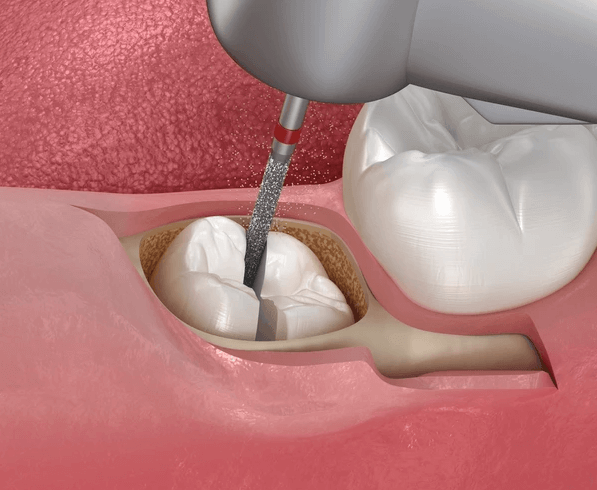
What Is Coronectomy?
Coronectomy is a specialized dental procedure primarily aimed at managing impacted wisdom teeth, particularly when they are situated close to vital structures like nerves or sinuses. Unlike traditional wisdom tooth extraction, which involves removing the entire tooth, coronectomy involves the selective removal of the crown portion of the tooth while leaving the roots intact below the gum line. This technique helps to mitigate the risks associated with extracting impacted wisdom teeth, such as nerve injury or damage to adjacent teeth or structures. Coronectomy is often considered when traditional extraction poses a higher risk of complications, providing a conservative yet effective approach to managing problematic wisdom teeth.
Before deciding on whether Coronectomy are right for you, there are some things you should know:
- Who Needs Coronectomy?
- What Are The Advantages Of Coronectomy?
- What Are The Alternative Treatments If I Do Not Choose Coronectomy?
- How Much Does Coronectomy Cost?
- What Are The Steps In The Coronectomy Procedure?
- What Are The Potential Risks Or Complications Of Coronectomy?
If you have any further questions about Coronectomy or other dental services offered at Atlas Dental, please contact us.

Free phone consultation
Have questions about Coronectomy? Book a free phone consult with our Toronto dental clinic

5 star google reviews
See for yourself why more and more people are choosing Atlas Dental for same day Coronectomy

Book Wisdom Teeth Removal Online
Have wisdom tooth pain in Toronto and need an appointment? Call our dental office for same day Coronectomy
Who Needs Coronectomy?
Coronectomy is typically recommended for individuals facing challenges associated with impacted wisdom teeth, particularly when these teeth are in close proximity to nerves or other vital structures. The following scenarios often indicate a need for coronectomy:
- Impacted Wisdom Teeth: When wisdom teeth fail to emerge properly through the gums, they can become impacted, leading to various complications such as pain, swelling, infection, and damage to adjacent teeth.
- Risk of Nerve Injury: Wisdom teeth located near the inferior alveolar nerve or lingual nerve pose a heightened risk of nerve damage during extraction. Coronectomy is a safer alternative in such cases as it minimizes the risk of nerve injury.
- Close Proximity to Sinuses: Wisdom teeth positioned close to the sinuses can increase the likelihood of sinus complications during extraction. Coronectomy helps to avoid potential sinus issues by leaving the roots of the tooth undisturbed below the gum line.
- Prevention of Complications: Individuals with certain medical conditions or anatomical variations may be at a higher risk of complications during wisdom tooth extraction. Coronectomy offers a conservative approach to managing impacted wisdom teeth while reducing the risk of associated complications.
By addressing these specific situations, coronectomy provides a tailored solution for individuals who may not be suitable candidates for traditional wisdom tooth extraction due to the potential risks involved. If you have further questions about Coronectomy, please contact us.
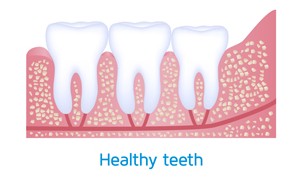
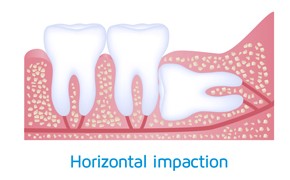
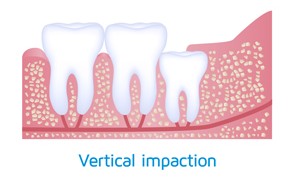
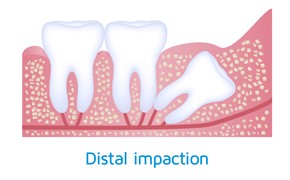
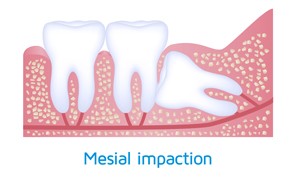
What Are The Advantages Of Coronectomy?
Coronectomy offers several advantages over traditional extraction methods, making it a preferred option in certain circumstances. Here are some key advantages of coronectomy:
- Preservation of Vital Structures: By selectively removing only the crown portion of the wisdom tooth while leaving the roots intact, coronectomy minimizes the risk of damage to adjacent nerves, sinuses, and nearby teeth. This preservation of vital structures reduces the likelihood of complications such as nerve injury, sinus perforation, and damage to adjacent teeth.
- Reduced Risk of Nerve Damage: Wisdom teeth, particularly those situated close to the inferior alveolar nerve or lingual nerve, pose a significant risk of nerve injury during extraction. Coronectomy helps to mitigate this risk by leaving the nerve-containing roots undisturbed below the gum line, thereby reducing the chances of permanent sensory disturbances or numbness.
- Lower Incidence of Dry Socket: Dry socket, a painful condition characterized by the loss of blood clotting at the extraction site, is a common complication following traditional tooth extraction. Since coronectomy involves minimal trauma to the surrounding tissues, the risk of developing dry socket is significantly reduced.
- Faster Recovery: Coronectomy typically results in less postoperative discomfort and swelling compared to traditional extraction, allowing for a faster and smoother recovery process. Patients often experience less pain and are able to resume normal activities sooner after undergoing coronectomy.
Overall, the advantages of coronectomy make it a valuable alternative for managing impacted wisdom teeth, particularly in cases where traditional extraction may pose a higher risk of complications. By prioritizing the preservation of vital structures and promoting faster healing, coronectomy offers a conservative yet effective approach to addressing problematic wisdom teeth. If you have further questions about Coronectomy, please contact us.
What Are The Alternative Treatments If I Do Not Choose Coronectomy?
If coronectomy is not chosen as the preferred treatment option for managing impacted wisdom teeth, several alternative approaches may be considered. These alternatives aim to address the issues associated with impacted wisdom teeth while minimizing the risk of complications. Some common alternative treatments include:
- Traditional Wisdom Tooth Extraction: The most straightforward alternative to coronectomy is traditional extraction, which involves the complete removal of the impacted wisdom tooth, including both the crown and roots. While extraction provides definitive resolution of the impacted tooth, it may pose a higher risk of complications such as nerve injury, sinus communication, and dry socket, especially in cases where the tooth is situated close to vital structures.
- Observation: In cases where impacted wisdom teeth are not causing significant symptoms or complications, a “wait-and-watch” approach may be recommended. Regular monitoring by a dentist or oral surgeon allows for close observation of the impacted teeth and prompt intervention if complications arise. However, this approach carries the risk of future problems such as infection, cyst formation, or damage to adjacent teeth.
- Referral to Specialist: In complex cases involving high-risk factors or significant complications, referral to an oral and maxillofacial surgeon or a specialist in oral surgery may be necessary. These specialists have advanced training and expertise in managing complex dental conditions, including impacted wisdom teeth, and can recommend appropriate treatment options tailored to the individual’s specific needs.
Ultimately, the choice of alternative treatments depends on various factors, including the severity of symptoms, the presence of complications, the patient’s overall dental health, and their preferences regarding treatment outcomes and risks. It’s essential for individuals to discuss their options thoroughly with a qualified dental professional to make informed decisions about the most suitable treatment approach for their unique situation. If you have further questions about Coronectomy, please contact us.
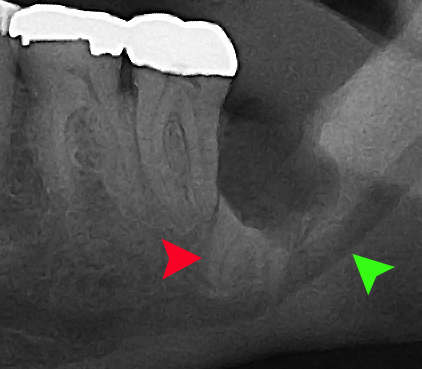
Cost of Coronectomy
Coronectomy costs $684 per tooth. The codes relevant to a Coronectomy in the Ontario Dental Association’s Suggested Fee Guide appear as follows:
Coronectomy, Intentional Partial Removal
- 72242 – Coronectomy (Deliberate Vital Root Retention to Prevent the Complications Associated with an Extraction): $684
Coronectomy is considered a basic service under all dental insurance plans and should be covered to your maximum insurable limit, but be sure to find out from your dental insurance plan provider how much you are eligible for before going ahead with dental treatment. Our fees are consistent with the ODA Fee Guide.
For patients without dental insurance, Atlas Dental is pleased to offer dental financing through Dentalcard. Affordable payment plans start at 7.95% for terms of 6 months to 6 years. To learn more about Dentalcard dental treatment financing, follow this link.
What Are The Steps In The Coronectomy Procedure?
Coronectomy is a specialized dental procedure that involves careful planning and precise execution to safely remove the crown portion of an impacted wisdom tooth while preserving the roots below the gum line. The following steps outline the typical process involved in a coronectomy procedure:
- Preoperative Assessment: Before proceeding with coronectomy, the dentist or oral surgeon will conduct a thorough examination, which may include dental imaging such as Panoramic X-rays or CBCT scans. This assessment helps determine the position of the impacted tooth, its proximity to vital structures (such as nerves or sinuses), and the presence of any underlying pathology or complications.
- Anesthesia: Local anesthesia is administered to numb the surgical area and ensure the patient’s comfort throughout the procedure. Depending on the complexity of the case and the patient’s preferences, additional sedation options may be offered to help manage anxiety and discomfort.
- Soft Tissue Management: The surgical site is prepared by gently retracting the surrounding soft tissues (gums) to expose the impacted wisdom tooth and adjacent structures. This allows the dentist or oral surgeon to visualize the tooth and plan the surgical approach accordingly.
- Crown Removal: Using precise surgical instruments such as burs or dental drills, the dentist or oral surgeon carefully removes the crown portion of the wisdom tooth. Special attention is paid to avoid damage to the surrounding tissues and vital structures while ensuring complete removal of the crown. The roots are left intact below the gum line to reduce the risk of complications.
- Hemostasis and Closure: Any bleeding at the surgical site is controlled using techniques such as pressure, sutures (stitches), or hemostatic agents to achieve hemostasis (cessation of bleeding). The soft tissues are then repositioned and sutured closed to facilitate proper healing and minimize the risk of postoperative complications.
- Postoperative Instructions: The patient receives detailed postoperative instructions, including guidelines for oral hygiene, diet, pain management, and follow-up care. It’s essential for patients to follow these instructions closely to promote optimal healing and minimize the risk of complications.
- Follow-Up Care: Patients typically return for a follow-up appointment to monitor healing progress, remove sutures if necessary, and address any concerns or complications that may arise. Regular follow-up visits allow the dental provider to ensure the success of the coronectomy procedure and address any lingering issues promptly.
By following these systematic steps and employing meticulous surgical techniques, coronectomy can be performed safely and effectively to manage impacted wisdom teeth while minimizing the risk of complications and promoting optimal outcomes for patients. If you have further questions about Coronectomy, please contact us.
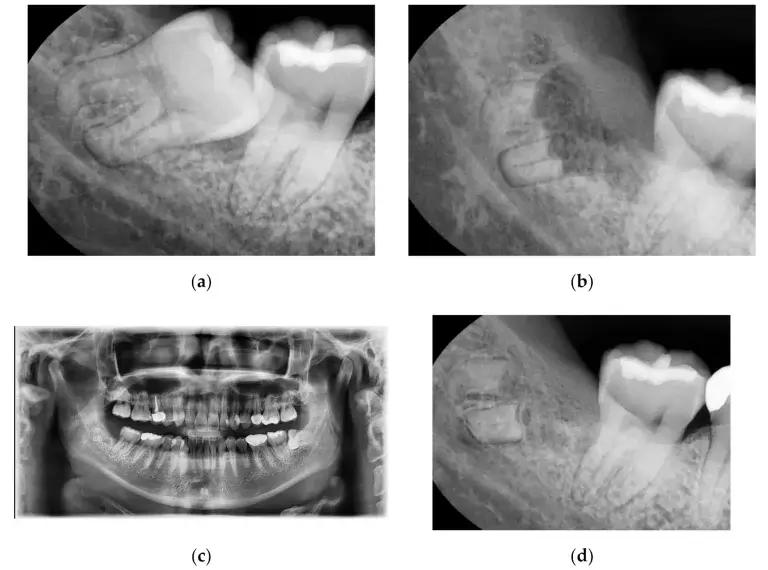
What Are The Potential Risks Or Complications Of Coronectomy?
While coronectomy is generally considered a safe and effective procedure, there are potential risks and complications that patients should be aware of. These may include:
- Dental Infection: Like any dental procedure, coronectomy carries a risk of infection, particularly if proper oral hygiene measures are not followed postoperatively. Infection at the surgical site can cause pain, swelling, and in severe cases, may require additional treatment such as antibiotic therapy or drainage of abscesses.
- Damage to Adjacent Teeth: While coronectomy aims to preserve neighboring teeth and structures, there is a small risk of inadvertent damage to adjacent teeth during the procedure. This could occur due to the proximity of the wisdom tooth roots to other teeth or anatomical variations.
- Persistent Symptoms: Some patients may continue to experience symptoms such as pain, swelling, or altered sensation in the surrounding tissues following coronectomy. Persistent symptoms may indicate complications such as nerve injury, infection, or unresolved issues with the remaining roots of the wisdom tooth.
- Rare Complications: Although rare, more serious complications such as excessive bleeding, sinus communication, or injury to nearby nerves or blood vessels may occur during or after coronectomy. These complications require prompt evaluation and management by a dental professional to prevent further complications.
It’s important for patients to discuss the potential risks and benefits of coronectomy with their dentist or oral surgeon before undergoing the procedure. By understanding the possible complications and following postoperative instructions carefully, patients can help minimize the risk of adverse outcomes and promote successful healing following coronectomy. If you have further questions about Coronectomy, please contact us.
We also think you’ll like…

Myogenic Trismus Home Care Instructions
Myogenic Trismus Home Care Instructions What Is Trismus? When your jaw muscles become so tight that you have difficulty opening your mouth wide, you may

Dental Pain Medication
Dental Pain Medication What Is Dental Pain Medication? Dental pain can range from a mild discomfort to intense throbbing, making even the simplest tasks unbearable.
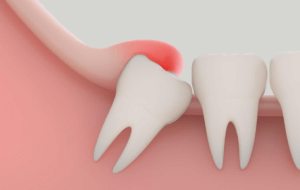
Pericoronitis
Pericoronitis What Is Pericoronitis? Pericoronitis is a painful dental condition that occurs when the gums around a partially erupted wisdom tooth becomes inflamed and infected.
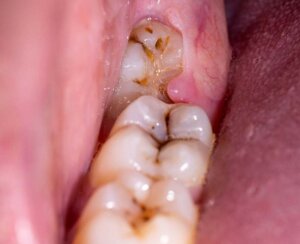
Impacted Wisdom Tooth
Impacted Wisdom Tooth What Is an Impacted Wisdom Tooth? If you’ve ever felt a dull ache in the back of your mouth or experienced discomfort
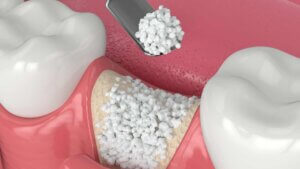
Dental Bone Graft
Dental Bone Graft What Is Dental Bone Graft? Dental bone grafting is a remarkable procedure designed to restore and enhance the underlying bone structure of
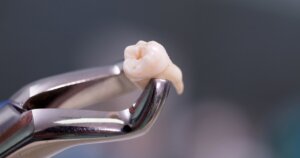
Oral Surgery Post Operative Instructions
Oral Surgery Post-Operative instructions In the first few days after having regular tooth removal, wisdom tooth removal, dental implant surgery, or other types of oral

